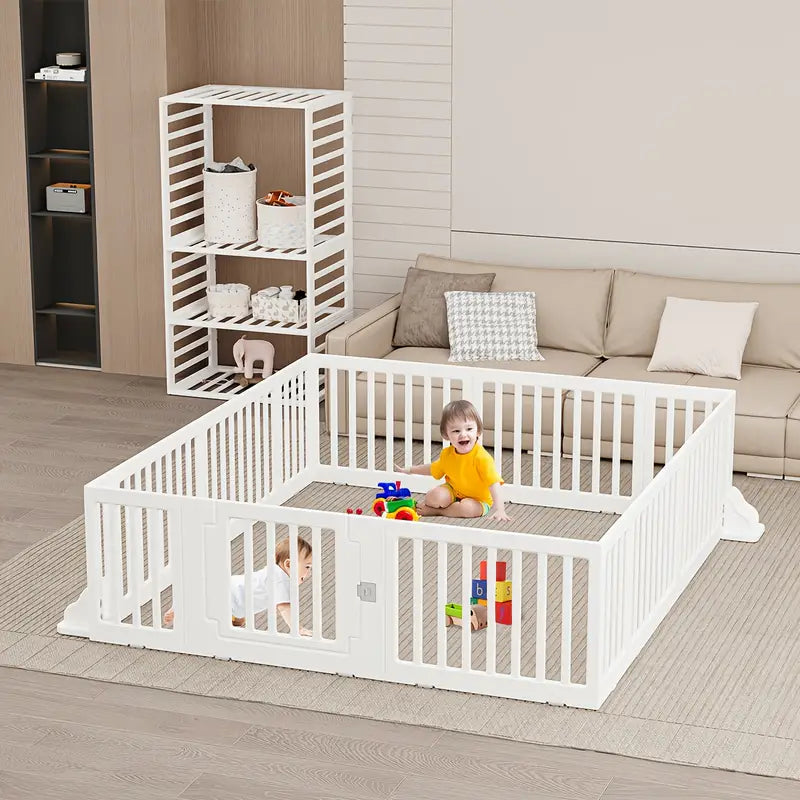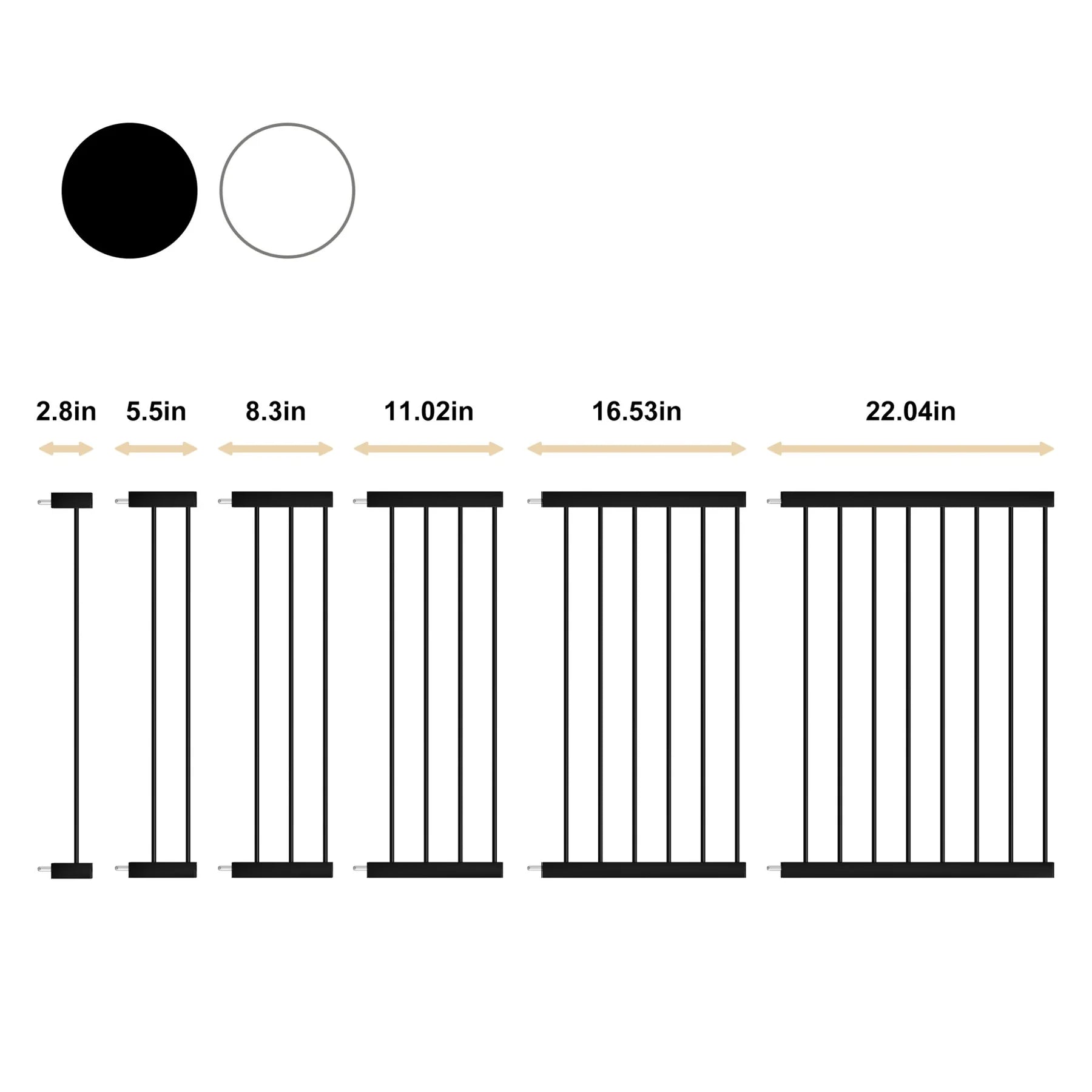Childproofing Stairs: Complete Guide to Keep Your Kids Safe & Injury-Free!
Stairs pose one of the biggest dangers for injury in toddlers and young children. According to research published in PubMed, stairway injuries account for a startling 89,000 visits to the emergency room every year for kids under the age of 5. The Child Injury Prevention Alliance ↗ reports that over 2,000 children are killed or injured from falling down stairs annually. Organizations like Kids in Danger ↗ emphasize the need for parents and caregivers to take action to avoid these preventable tragedies.
Childproofing stairs in your home is absolutely crucial for keeping little ones safe. This comprehensive guide will provide parents and caregivers with the key techniques, expert advice, and real-world insights needed to properly prepare stairs and prevent stair-related injuries ↗.
The Irresistible Allure of Stairs for Kids
To childproof stairs effectively, it's important to first understand the reasons why stairs hold such an irresistible fascination for toddlers and young children in the first place.
Developing Motor Skills and Coordination
For toddlers and preschoolers, stairs offer the perfect way to practice emerging motor skills and coordination. Going up and down steps allows them to develop leg and core strength necessary for walking, as well as balance. The reassuring presence of sturdy handrails also provides stability as they build confidence cruising and navigating stairs. Mastering stair climbing promotes important gross motor development.
Cognitive Development and Problem Solving
Stairs also present an engaging cognitive challenge at a prime age for developing problem-solving abilities. Figuring out how to climb up and down stairs safely encourages kids' critical thinking skills. They must plan movements and assess risk. Overcoming the stairs gives youngsters a real sense of purpose and achievement.
Excitement, Exploration, and Independence
Additionally, many toddlers simply find moving along stairs thrilling and adventurous. The elevated views from different heights spur natural curiosity. Conquering the stairs independently gives them confidence and allows them to emulate parents. The various motivations make resisting the stairs impossible for determined toddlers.
The Necessity of Childproofing
While it's developmentally appropriate for children to show interest in stairs, the risks of falls and injury are real. Steps must be properly childproofed to allow exploration safely. Understanding what draws kids to stairs will inform the best ways to protect them. Securing stairs goes beyond just blocking access - it means minimizing hazards that can lead to slips, trips, and dangerous tumbles.
Essential Steps to Childproofing Stairs
Utilizing a multi-layered approach is the most effective way to childproof stairs in your home. These evidence-based precautions will help safeguard curious kids.
Installing Safety Gates - A First Line of Defense
Stair gates for toddlers are an essential first measure to block off access to stairs for babies and toddlers. Safety experts, including the American Academy of Pediatrics, strongly recommend installing gates at both the top and bottom of stairs. Hardware-mounted gates that screw into the wall are more secure than simple pressure-mounted options.

Gates with alarms that sound when opened also provide an extra layer of alertness. Look for safety-tested, JPMA-certified gates that meet the latest standards. Proper installation and using manufacturer recommended hardware is crucial for safety gates to work.
Ensuring Traction with Non-Slip Treads
Slipping on stairs poses a major danger to kids. Replacing slippery wooden or tile steps with full-length, textured treads creates essential friction. Treads made of durable materials like rubber, mesh, or abrasive strips better grip little feet and shoes to prevent falls.
Check that treads cover each step fully and are securely adhered at edges for safety underfoot. Proper traction is key for stability during this crucial stage of motor skill development.
Eradicating Tripping Hazards
Loose objects left on the stairs can easily turn into dangerous stumbling blocks for unsteady toddlers. Keeping stairs completely clear of toys, shoes, books, and clutter is a must. Utilize cord covers and anchors to secure the stair handrails tightly and avoid loose hazardskids can trip over.
Building the habit of thoroughly scanning stairs before allowing a child access can help identify and eliminate potential hazards. Decluttering is vital for removing unsafe elements that can lead to falls.
Enhancing Visibility for Safe Navigation
Navigating stairs requires focus and visual clarity. Ensure lighting is ample at the top and bottom of stairs, so kids can clearly see each step. Use nightlights or motion-sensor lights to illuminate passageways and landings.
Installing reflective tape along the edges of wooden or painted stairs improves step visibility. Brighter strips or colored treads make hazards obvious even to toddlers' developing vision and perception. Enhanced lighting gives them the visibility needed to judge distances and surface edges.
Teaching Safe Use Habits
Childproofing the stairs themselves is crucial, but coaching kids on proper stair habits is also key:
- Show them how to use handrails for stability and remind them to grip rails with each use.
- Set and enforce rules like no toys on the stairs, no climbing or playing on steps.
- Demonstrate climbing up stairs on all fours for better stability. Descend stairs slowly while holding the handrail, facing forward.
- Praise safe stair practice to positively reinforce cautious behavior. Develop their skills incrementally under supervision.
Securing Doors that Access Stairs
Preventing access to stairs also relies on securing doors that lead to them. Use doorknob covers and high locks out of reach of kids to prevent wandering into stairways unsupervised. Install door alarms that sound when the door opens as an alert system.
Take a comprehensive approach by combining layers of protection - gates, visibility, traction, teaching, and door security work in tandem to childproof stairs for confidence.
Expert Tips and Real-World Insights
Along with the major methods outlined above, stair safety specialists recommend considering these added childproofing tips:
- Use a removable mesh gate at the open side of stairs to prevent falls through spindles.
- Anchor heavy furniture like bookcases to keep from tipping if climbed.
- Extend wall railings to the bottom and top of stairs if balusters have wide gaps.
- Check regularly for loose or weak boards, nails, railing spindles that require repair.
- Pad sharp corners or block under stair spaces with furniture/boxes to avoid head bumps.
- Consider stairway accessibility - blocking may hinder emergency evacuation.
Parents who have successfully childproofed emphasize vigilance in addition to precautions:
- "I have alarms on every door and gate leading to the stairs - they alert me instantly if opened."
- "We practiced stairs together while holding hands at first. Repetition taught good habits."
- "I check the stairs every time for hazards before my toddler uses them. Prevention is key."
- "Have their pediatrician assess if they have the developmental skills for stairs during check-ups."
When Your Child Falls Down the Stairs
Stairs are a major danger zone for toddlers and children. Tumbles down the stairs are frightening and often result in injuries requiring medical care.
With toddlers who cannot yet speak, you'll need to carefully assess them for signs of serious injury. Gently check for head trauma, neck or back pain, limb injuries, and any bleeding. Watch closely for symptoms like persistent crying, vomiting, confusion, numbness in limbs, or inability to move parts of the body. Applying ice packs to bruises can provide comfort.
If any worrying symptoms are present, immediately seek emergency care, even if your toddler seems generally alert. Stairs falls can cause internal injuries not readily apparent. Don't delay getting care - early treatment is crucial.
For verbal children who fall downstairs and can communicate, ask questions to help determine how they're feeling:
- Does anything hurt when they move? Have them slowly try rotating wrists and ankles.
- Do they feel pain in their neck, back, hips or ribs? This may indicate dangerous spinal or skeletal injuries.
- Are they dizzy, seeing double, or feeling confused? These are concussion red flags.
- Can they remember what happened before and after the fall? Memory loss suggests head trauma.
Apply ice to swelling and watch for delayed onset of symptoms. Even if they seem fine initially, worsening pain, nausea, or other issues may arise over hours. Repeat assessments periodically. Seek ER care for any worrying or worsening symptoms, signs of concussion, or intense pain. Early expert evaluation is vital for falls involving stairs.
As with any serious pediatric fall, don't delay emergency care - early treatment can help minimize complications and lasting effects. Pediatric trauma centers have specialists trained to accurately assess and properly treat stair-related injuries in children. Don't hesitate to take them in. With prompt care guided by experts, even the scariest stair falls can have positive recoveries.
Conclusion
The irresistible attraction of stairs for toddlers and young children demands effective, multi-layered childproofing by parents for injury prevention. Safety gates, traction, visibility, enforcing rules, and securing doors must act in combination to fully protect kids. Additional precautions and vigilance add even more security on top of the essential measures.
While curious kids will likely still be drawn to the stairs, properly preparing the environment can help keep your climbers injury-free and allow them to develop new skills safely. With the right amount of forethought, childproofing and supervision, the keys to the upstairs can be in their hands soon.






Leave a comment